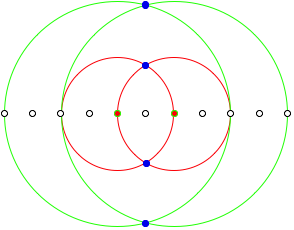Hans Walser, [20060507a], [20131229b]
The golden section and lattice geometry
1 Working on a chessboard
Let n be an integer number such that both n and ![]() are sums of two
square numbers. In this case the proportion of the golden section can be
constructed in a square lattice, using circles going through lattice points.
are sums of two
square numbers. In this case the proportion of the golden section can be
constructed in a square lattice, using circles going through lattice points.
ItŐs a kind of geometry on a chessboard.

Chessboard
1.1 Example
In the case of ![]() we have:
we have:
![]()
This gives the solution:

Where is the golden section?
In the labeling of the following figure the point B divides the segment AC in the proportion of the golden section.

The point B divides the segment AC in the golden proportion
The red circle has its
midpoint in the origin and passes through ![]() , its radius is
, its radius is ![]() . The green circle is also around the origin and passes
through
. The green circle is also around the origin and passes
through ![]() . Its radius is
. Its radius is ![]() . Therefore we have:
. Therefore we have:

The number ![]() indicates the
golden section ([Walser 2001], p. 4).
indicates the
golden section ([Walser 2001], p. 4).
1.2 General case
This works also in general. From
![]()
we get the red circle
around the origin and passing trough ![]() with radius
with radius ![]() and the green
circle with the same midpoint, going through
and the green
circle with the same midpoint, going through ![]() and radius
and radius ![]() . Working with the corresponding points as in the particular
case above we have:
. Working with the corresponding points as in the particular
case above we have:

1.3 Further examples
1.3.1 n = 1
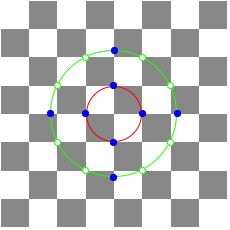
n = 1
In this case the blue points on the red circle are lattice points.
1.3.2 n = 2
![]()
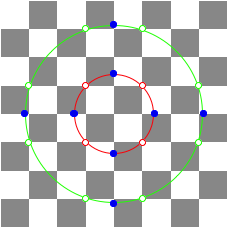
n = 2
1.3.3 n = 5
![]()
Here we have to enlarge the chessboard.
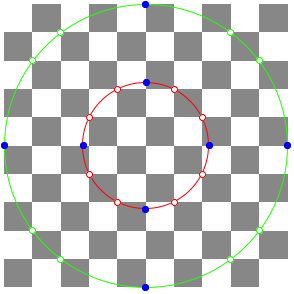
n = 5
Of course we could also work with the decomposition:
![]()
1.3.4 n = 10
![]()
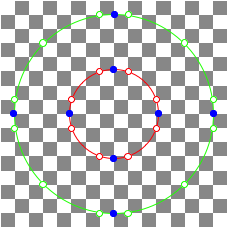
n = 10
1.3.5 n = 13
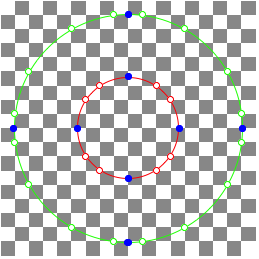
n = 13
2 Working on an integer baseline
Let n be an integer number such that both n and ![]() are differences
of two square numbers. In this case the proportion of the golden section can be
constructed in an integer baseline, using circles with integer radii.
are differences
of two square numbers. In this case the proportion of the golden section can be
constructed in an integer baseline, using circles with integer radii.
2.1 Example
![]()
Where is the golden section?
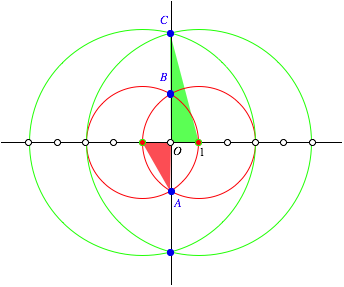
How to see it
In the red triangle we
have ![]() and in the
green triangle
and in the
green triangle ![]() . Therefore:
. Therefore:
![]()
This works also in general. The proof is left to the reader.
We see that in our Example only every second mark of the baseline is used. Therefore we can simplify the figure in omitting every second mark. And using a nice coloring we get the following result.
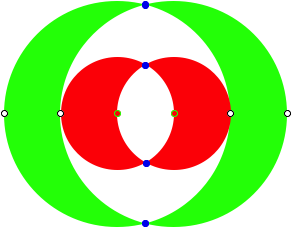
Crescents
2.2 Further examples
2.2.1 n = 3
We had already this solution:
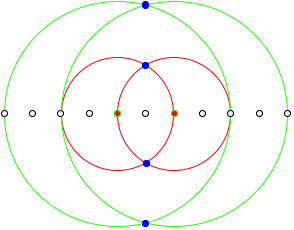
n = 3
But there is a second solution:
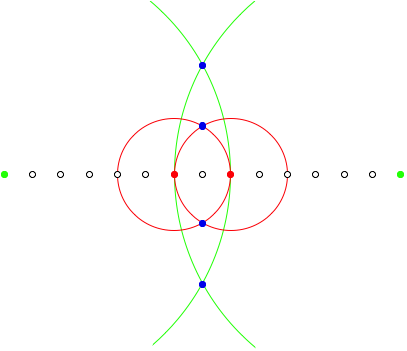
Second solution
In this case the proof uses the following triangles:
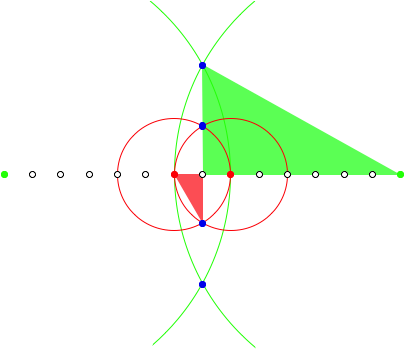
Proof Figure
2.2.2 n = 4
![]()
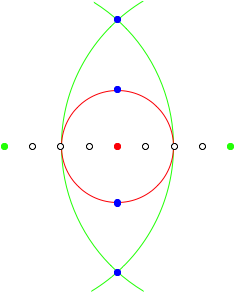
n = 4
2.2.3 n = 7
![]()
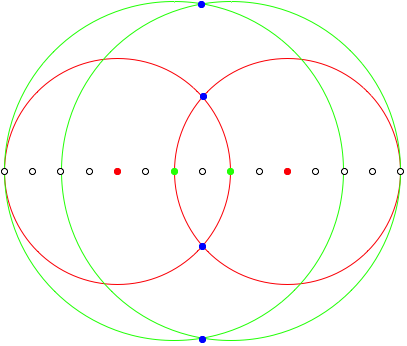
n = 7
2.2.4 n = 8
![]()
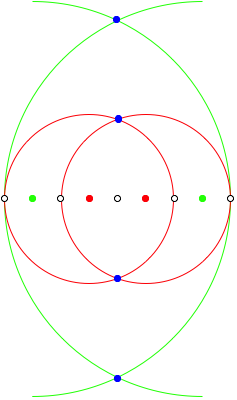
n = 8
2.2.5 n = 9
![]()
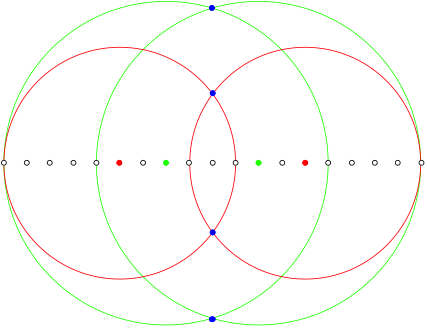
n = 9
There is of course an other solution.
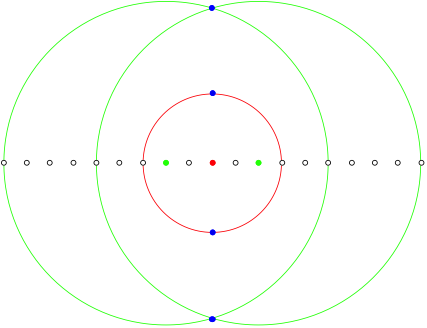
n = 9, other solution
2.2.6 n = 11
![]()
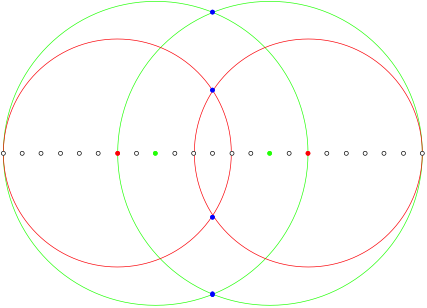
n = 11
2.2.7 n = 12
![]()
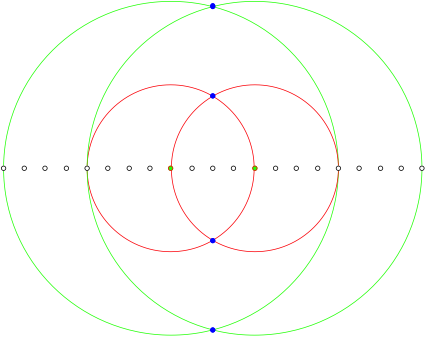
n = 12
This figure we had already in the case n = 3, but here zoomed by the factor 2. This is obvious, since
And so on. The reader will easily find other examples.
3 Chessboard an circles
3.1 Example
In the case of
we have n as difference and 5n as sum of two squares. Therefore we have to combine the two methods from above.
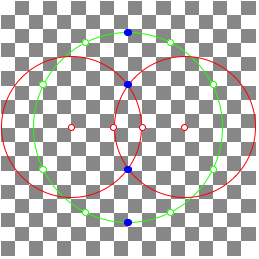
n = 9
3.2 An other example
![]()
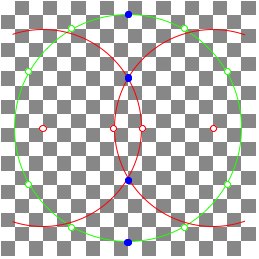
n = 13
Acknowledgment
The author would like to thank Jo Niemeyer (Schluchsee, Germany) for helpful suggestions.
Reference
[Walser 2001] Walser, Hans: The Golden Section. Translated by Peter Hilton and Jean Pedersen. The Mathematical Association of America 2001. ISBN 0-88385-534-8
